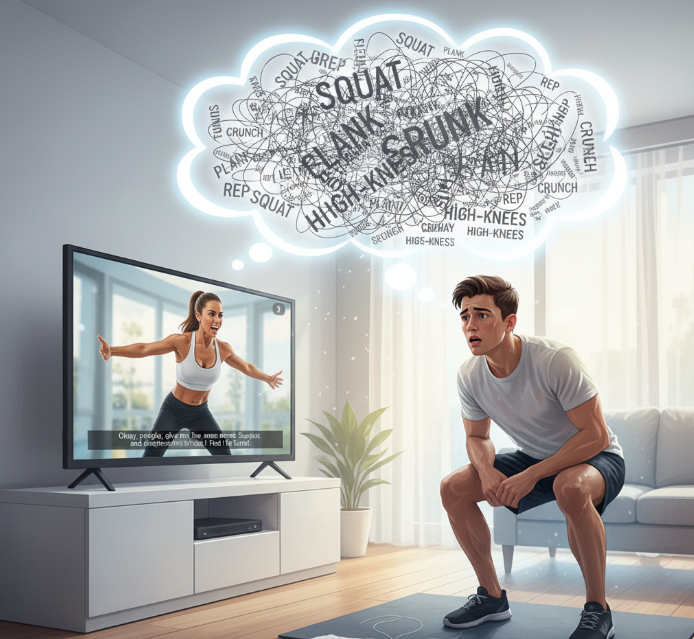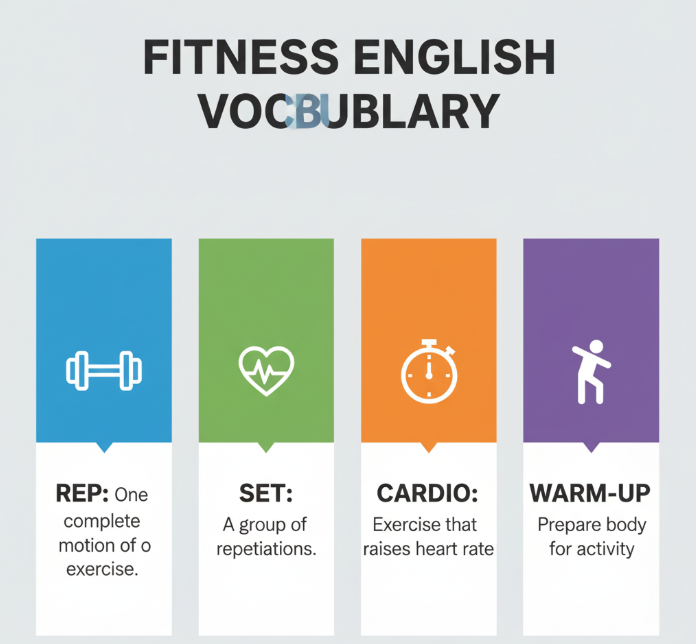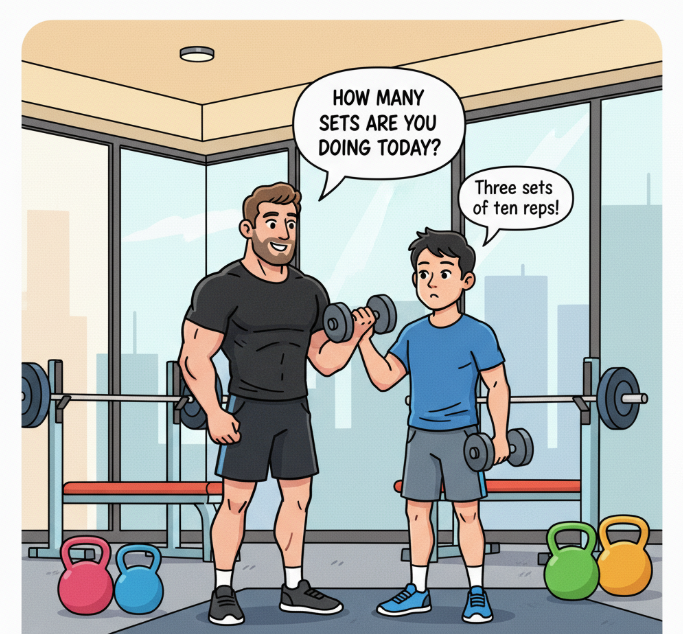Introduction
Have you ever started an English workout video, full of motivation, only to pause thirty seconds later because the trainer shouted something like “engage your core” and you weren’t sure if that meant hold your breath or tighten your stomach? If yes, welcome to the club.

The truth is, fitness culture has become global, and English is its unofficial language. The labels on gym machines, the subtitles on YouTube workouts, the prompts from personal trainers in big chains—they’re all in English. So if you want to keep up with today’s workouts (and not just stare blankly at the screen), you need to get familiar with English sport and fitness expressions.
This isn’t just about knowing words like push-up or yoga. It’s about understanding coaching language, following instructions in real time, and feeling confident enough to talk back to a trainer without sounding lost. In the next sections, we’ll go over key fitness terms, common video phrases, coaching dialogues, and practical strategies that will make your workouts (and your English practice) twice as effective.
Why English Sport and Fitness Expressions Matter
Think of it like this: language is part of the workout. If you don’t understand the words, you can’t do the moves. Imagine sitting on a rowing machine while your coach says, “Relax your shoulders and pull through your elbows.” Without knowing what “pull through” means, you’ll probably end up shrugging your shoulders and wondering why your neck hurts.
Here are a few everyday situations where fitness English matters:
- At the gym: Someone says, “I just finished my last set, it’s all yours.” If you don’t know what “set” means, you’ll just awkwardly hover nearby.
- In videos: A trainer says, “Keep your knees soft,” and you’re confused—is that code for “don’t cry”?
- During coaching: You may want to say, “Can we lower the intensity a little?”—but you need the right words.
On top of that, fitness language is repetitive. Words like set, rep, stretch, breathe keep coming back. That’s good news for learners, because repetition is exactly what makes vocabulary stick. And if you’re already learning English grammar, you’ll notice that many workout instructions use modal verbs like must, should, or can (see modal verbs explained here).
Core Fitness Vocabulary Everyone Should Know
Let’s start with the basics. These are the terms that come up everywhere: in gyms, in online videos, and in casual conversations between fitness fans.

- Rep (repetition): One single movement of an exercise.
- Example: Do 10 reps of push-ups.
- Set: A group of reps.
- Example: Complete 3 sets of 12 reps.
- Cardio: Exercises that raise your heart rate.
- Example: Running, cycling, swimming—they’re all cardio.
- Warm-up: Gentle activity to prepare your body.
- Example: Five minutes of jumping jacks as a warm-up.
- Cool-down: Slow stretches or light activity at the end.
- Example: Don’t skip the cool-down, it helps recovery.
- Core: Muscles around your abs and lower back.
- Example: Engage your core during planks.
- Strength training: Exercises that build muscle.
- Example: Lifting weights is strength training.
- Flexibility: How much you can stretch or bend.
- Example: Yoga improves flexibility.
These terms are your bread and butter. Without them, you’ll feel lost in any English-speaking gym. If grammar sometimes trips you up, start by reviewing simple sentences in English—it will help you combine these terms into clear, usable phrases.
Phrases You’ll Hear in Workout Videos
Online workouts are a mix of motivation and instruction. Trainers often use short, punchy lines that sound confusing until you’ve heard them a few times. Here are some you’ll almost certainly encounter:
- “Engage your core” → Tighten your abs.
- “Keep your knees soft” → Slightly bend your knees, don’t lock them straight.
- “Push through your heels” → Put pressure on your heels (especially during squats).
- “Breathe through the movement” → Don’t hold your breath.
- “Keep your back straight” → Maintain good posture.
- “One more rep!” → Spoiler: it’s rarely just one more.
The trick here is rhythm. Trainers often speak quickly, so learning to catch the keywords—core, knees, heels, breathe—is the real skill. If speed is your biggest challenge, check out this article on understanding fast native speakers.
Coaching Dialogues in English
Whether in person or online, talking with a trainer is different from just watching a video. Coaching is interactive—you need to ask, answer, and sometimes negotiate.

Here are some common exchanges:
- Trainer: “How many sets do you usually do?”
- You: “Three sets of ten reps.”
- Trainer: “Can you increase the weight?”
- You: “Sure, I’ll add five kilos.”
- Trainer: “Don’t forget to cool down.”
- You: “I’ll stretch for ten minutes, thanks.”
Simple, direct, and practical. These short lines are the building blocks of coaching communication. Later, you can even practice retelling them using reported speech. For example: “My trainer told me not to forget the cool-down.”
Practical Tips and Resources
Now comes the fun part—how to actually learn these expressions without feeling like you’re cramming for an exam.
- Watch daily workouts. Even five minutes a day builds your ear.
- Switch your apps to English. Fitness apps give constant reminders—perfect for practice.
- Repeat phrases aloud. Yes, talk to yourself while working out. Nobody cares, everyone’s wearing headphones anyway.
- Keep a fitness journal. Write down words you hear (see this language journal guide).
- Mix in reliable resources. Sites like Mayo Clinic’s fitness section or Verywell Fit are clear, simple, and trustworthy.
And here’s the secret: the more you combine language with physical movement, the faster you’ll remember. Your brain literally ties the word to the action.
Conclusion
Learning English sport and fitness expressions won’t just make you sound smarter at the gym—it will also make your workouts smoother and safer. You’ll follow instructions correctly, talk comfortably with trainers, and even enjoy English videos that once felt overwhelming.
So why wait? Pick a video, press play, and challenge yourself to learn at least three new expressions today. Think of it as a workout for your body and your vocabulary at the same time. Tomorrow, both will be a little stronger.
